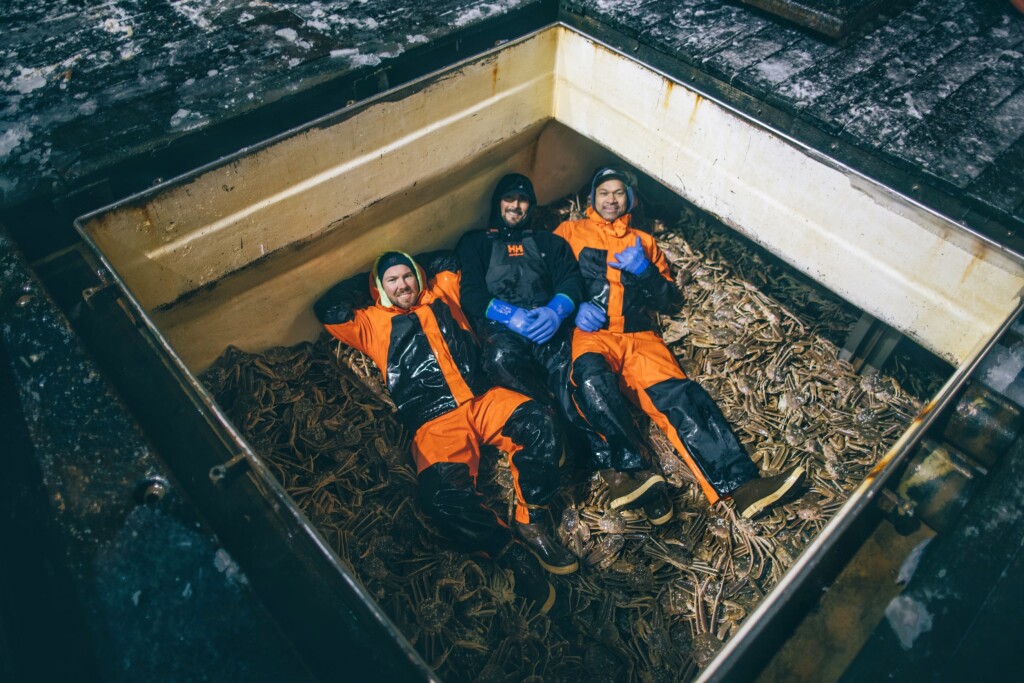It is no mistake that Helly Hansen has been around since 1877. The company knows how to make gear that works in the elements, and their flagship commercial fishing deckwear, the Storm rain jacket and bibs, is no exception. The Storm line strikes a nice balance between durability and wearability, with materials that can take a beating yet allow for freedom of movement.
Gabriel Prout and his deck mates on the F/V Silver Spray have been using the Storm gear for the past two seasons, crabbing in the Bering Sea in the winter and salmon tendering in Prince William Sound in the summer. Prout said the simple fact that some of the Helly Hansen gear is still in use two years later is a testament to its quality in a fishery where deckwear gets routinely thrashed and discarded.
“While some other raingear can wear thin and weep moisture under the material or break or tear at the seams, the Helly Hansen Storm is much more durable. A lot of the rain gear we use — while great and quick and light to throw on — lacks a heavy-duty or durable feel to it, and after a few weeks of use, begins cracking or even gathering holes and rips along the seams,” Prout said.
Beyond its durability, the Storm coat has features that work. The neoprene cuffs do not bind or ride up and are housed under the sleeve of the coat, which keeps them a bit drier. There is a Napoleon chest pocket inside the front zipper with a headphone hole to run cables up through the coat, and the zipper itself has a double flap covering. The adjustable hood is also very comfortable and keeps you dry.
The Storm bibs have the same solid construction as the coat, with elastic suspenders that are comfortable and easy to adjust. The snap on the waist is functional, and other than that, the bibs are mercifully free of snaps or flaps or Velcro that are often little more than a snag hazard. Helly Hansen likes to point out that the Storm line is made without phthalates, making them more environmentally friendly than raingear from some competing manufacturers.
The gear runs true to size, and the cut of the both the jacket and bibs is a bit slimmer than the traditional super baggy raingear — take the Grundéns Herkules line, for example — but not too slim for fishermen with average builds to move freely and layer up underneath.
Prout said that if there are any disadvantages to the Storm gear, they are in donning and doffing, which can be a bit more difficult because of the slightly slimmer fit and the thicker material.
“Crabbers are always looking for the perfect compromise between durability and ease of access, quick on and off. Because the Helly Hansen gear is so well made, it naturally is a little thicker, so it can be a little more work to put on. When you run several strings a day with only a 15-minute break to change into dry clothes or get a bite to eat, something that takes less effort and is quicker to get on and off is sometimes a more desirable option, even if it is of lesser quality,” Prout said.
Would he buy Helly Hansen again to face the rigors of winter on the Bering Sea?
“I would definitely buy it in the future and use a hybrid of two different brands for crabbing. If I need to grab a quick pair of raingear to throw on, I’ll grab the Grundéns. If I need something to go outside and stand in the rain for four hours while we offload, I would probably grab the Helly Hansen. Both have their perks and qualities to them. I would definitely say overall Helly Hansen will keep you dryer,” Prout said.







